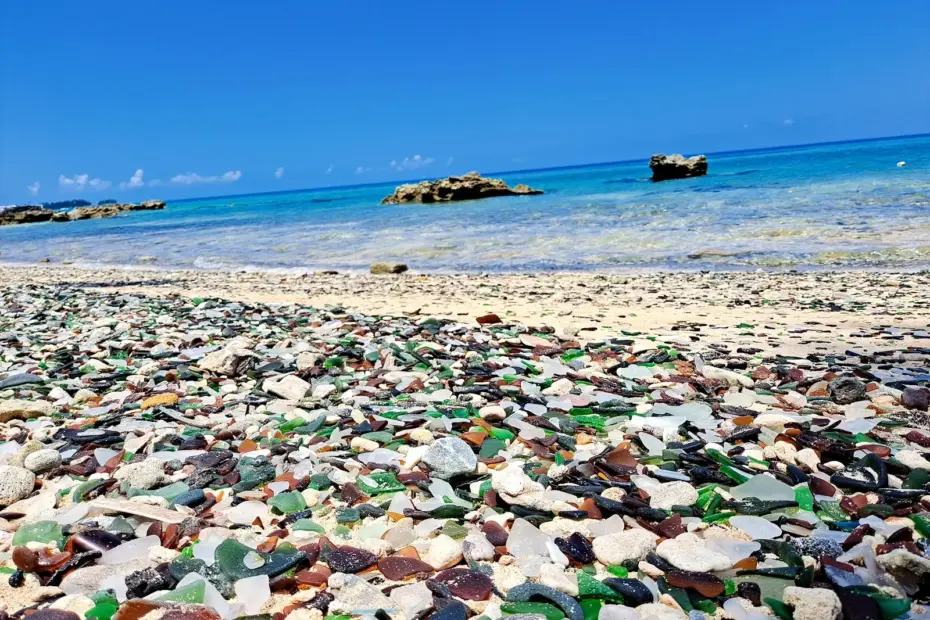Bermuda, a picturesque island in the Atlantic Ocean, is renowned for its turquoise waters, pink sand beaches, and rich maritime history. Among its many attractions, Bermuda’s sea glass beaches stand out as unique treasures that captivate visitors and collectors alike. These beaches, adorned with smooth, frosted pieces of sea glass, tell a story of transformation—where discarded glass meets the relentless forces of nature to create something beautiful.
Sea glass is a product of time and tide. It begins its journey as broken shards of glass from bottles, jars, or other objects that find their way into the ocean. Over decades, these fragments are shaped by waves, sand, and saltwater into smooth, frosted gems.
Bermuda’s location in the heart of historical maritime routes and its centuries-long naval activity have contributed to an abundance of sea glass along its shores. This makes it a prime destination for enthusiasts seeking these colorful remnants of history.
One of the most famous spots for sea glass enthusiasts is Sea Glass Beach near the Royal Navy Dockyard. This hidden gem offers a serene escape where visitors can marvel at the vibrant hues of sea glass scattered across the rocky shoreline. The beach not only provides a visual feast but also serves as a reminder of Bermuda’s rich cultural and ecological heritage.
1. Understanding Sea Glass
What is Sea Glass?
Sea glass is more than just broken glass; it is a testament to nature’s ability to transform waste into beauty. It originates from discarded glass objects such as bottles, jars, or even decorative items that end up in the ocean.
Over 20 to 30 years—or even longer—these fragments undergo a process of mechanical and chemical weathering. The constant tumbling by waves smooths their edges, while abrasion by sand and chemical etching from saltwater give them their characteristic frosted appearance.
The transformation process makes each piece of sea glass unique. Its irregular shapes and textures are shaped by the environment in which it is found, making it a sought-after collectible for beachcombers and artisans alike.
The Colors of Sea Glass
Sea glass comes in a variety of colors, each telling its own story about its origins:
- Common Colors: White (from clear bottles), green (from wine bottles), and brown (from beer bottles) are the most frequently found colors.
- Rare Colors: Red (from old tail lights or decorative glass), turquoise (from vintage tableware), orange (from industrial uses), and purple are highly prized due to their rarity.
The rarity of certain colors adds an element of excitement to sea glass hunting. For collectors, finding a piece in an uncommon hue can feel like discovering buried treasure.
Why is Bermuda Special for Sea Glass?
Bermuda’s unique history and geography make it an exceptional location for sea glass collection. The island has served as a strategic naval base since the 1600s, resulting in centuries of maritime activity that contributed to the disposal of glass into the surrounding waters. Shipwrecks near Bermuda’s reefs further enriched its shores with fragments from medicine bottles, decorative items, and other artifacts.
Beaches like Alexandra Battery Beach and Dockyard Beach have become hotspots for sea glass enthusiasts due to their proximity to historical dumping sites and shipwrecks. These locations offer not only an abundance of sea glass but also an opportunity to connect with Bermuda’s storied past.
2. Top Sea Glass Beaches in Bermuda
Dockyard Beach (Convicts Cemetery Beach)
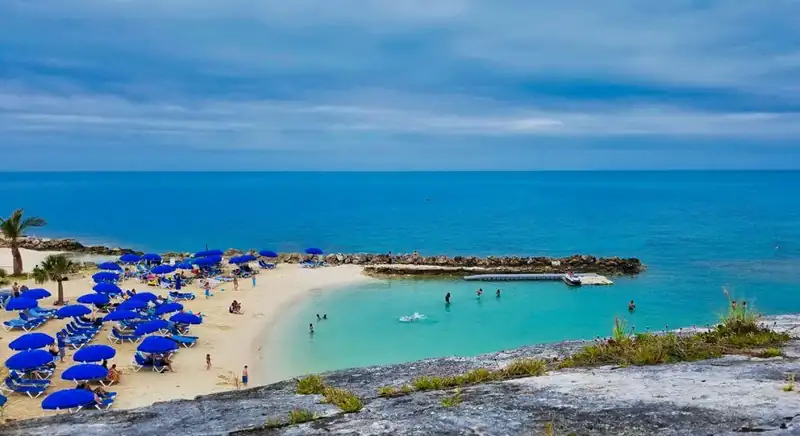
Located near the Royal Navy Dockyard on Bermuda’s west coast, Dockyard Beach—also known as Convicts Cemetery Beach—is one of the island’s most famous sea glass destinations. Historically used as a dumping ground for naval waste, this beach is now covered with an array of sea glass in various shapes and colors.
Visitors to Dockyard Beach can enjoy exploring its rocky terrain while searching for unique pieces of sea glass. However, access may be limited due to redevelopment projects in the area aimed at preserving its historical significance.
Alexandra Battery Beach
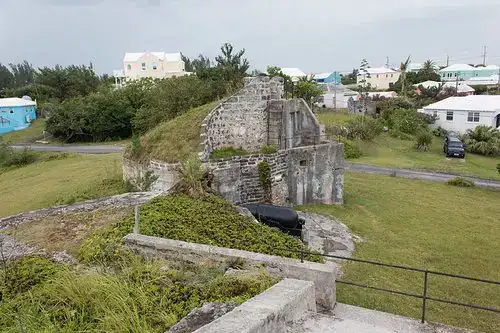
Situated on St. George’s Island near an 1860s fort, Alexandra Battery Beach is another must-visit location for sea glass enthusiasts. This beach is particularly known for its diverse range of colors, including green, brown, blue, and even rare red pieces. The combination of historical significance and natural beauty makes it a favorite among both locals and tourists.
In addition to sea glass hunting, Alexandra Battery Beach offers snorkeling opportunities in its crystal-clear waters. Nearby attractions such as St. Catherine’s Fort provide further reasons to explore this area.
Other Notable Beaches
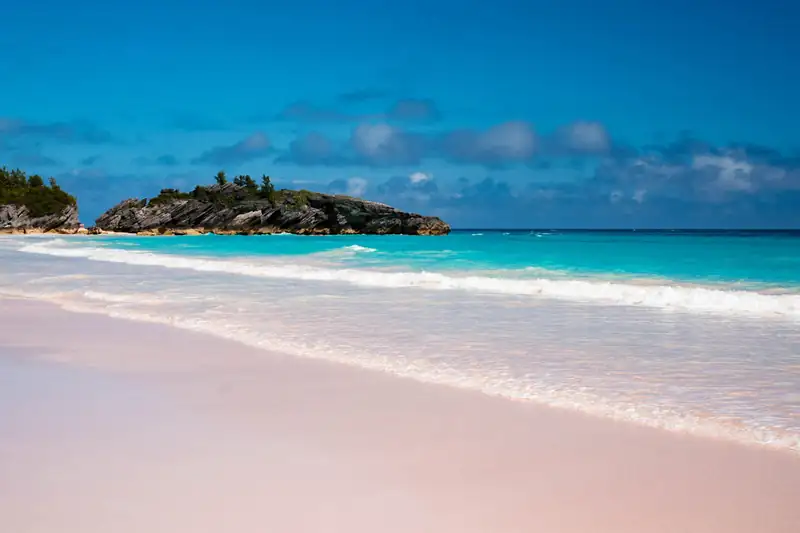
- Black Bay Beach: A hidden gem located near Dockyard Beach, Black Bay Beach boasts shades of green, blue, and white sea glass scattered across its shores.
- Church Bay Beach: While lesser-known among tourists, Church Bay Beach rewards those willing to venture off the beaten path with unique finds and breathtaking views.
Each beach has its own charm and character, offering visitors a chance to experience Bermuda’s natural beauty while uncovering remnants of its maritime past.
3. The History Behind Bermuda’s Sea Glass
Origins of Bermuda’s Sea Glass
The origins of Bermuda’s sea glass can be traced back to centuries-old practices tied to the island’s maritime history. Shipwrecks along Bermuda’s treacherous reefs often resulted in cargo—including bottles containing medicine or spirits—being lost at sea. Over time, these fragments washed ashore as smooth pieces of sea glass.
Additionally, local dumping practices during Bermuda’s early colonial period contributed to the abundance of discarded glass along its coastline. Beaches like Dockyard Beach served as de facto dumping grounds for naval operations stationed on the island.
Cultural Significance
Sea glass holds a special place in Bermudian culture as both an artistic medium and a symbol of transformation. Local artisans often incorporate sea glass into jewelry or decorative items that celebrate the island’s natural beauty and history. These creations serve as meaningful souvenirs for visitors while supporting sustainable tourism practices.
Historical anecdotes further enrich the cultural significance of sea glass in Bermuda. For example, residents near Albert Row once created intricate mosaics using collected sea glass before redevelopment transformed their neighborhood.
4. Tips for Visiting Sea Glass Beaches in Bermuda
Best Times to Visit
Timing is crucial for a successful sea glass hunting experience in Bermuda. The best time to visit these beaches is during low tide when the foreshore is exposed, revealing more sea glass scattered along the shoreline. Low tide provides optimal conditions for spotting these frosted gems, as they are often hidden beneath layers of sand or submerged underwater.
Another ideal time to explore sea glass beaches is after storms. The turbulent waves churn up the ocean floor, dislodging and depositing new pieces of sea glass onto the shore. Visiting during off-season months also offers advantages, such as fewer crowds and a more tranquil environment, allowing for an uninterrupted beachcombing experience.
What to Bring
Preparation is key to making the most of your visit to Bermuda’s sea glass beaches. Here are some essentials to pack:
- Sturdy Footwear: Many sea glass beaches in Bermuda have rocky terrain, so comfortable and durable shoes are a must.
- Mesh Bags: These are perfect for collecting sea glass while allowing sand and water to drain out.
- Sunscreen and Hat: Bermuda’s sun can be intense, so protecting your skin is essential.
- Snorkeling Gear: For beaches like Alexandra Battery Beach, snorkeling gear can enhance your experience by allowing you to explore underwater treasures.
Carrying a guidebook or app that identifies rare sea glass colors can also add an educational element to your adventure.
Etiquette and Rules
While collecting sea glass can be a rewarding activity, it’s important to respect the rules and guidelines set by local authorities. Some beaches, like Dockyard Beach, have restrictions on collecting sea glass to preserve their natural beauty and ecological balance. Visitors should always adhere to posted signs and regulations.
Practicing good etiquette is equally important. Avoid trampling vegetation or disturbing wildlife habitats while exploring the beaches. If you come across particularly rare or historically significant pieces of sea glass, consider leaving them behind as part of Bermuda’s cultural heritage.
Safety Tips
Bermuda’s beaches are generally safe, but visitors should remain cautious of potential hazards:
- Marine Life: During spring months, certain beaches may have Portuguese Man-of-War jellyfish in the waters. Their stings can be painful, so it’s best to stay alert.
- Slippery Rocks: Many sea glass beaches have uneven or slippery surfaces, so tread carefully to avoid injuries.
- Weather Conditions: Keep an eye on weather forecasts before heading out, as sudden storms can make beach conditions unsafe.
By following these tips, you can ensure a safe and enjoyable visit while preserving the natural beauty of Bermuda’s sea glass beaches.
5. The Art of Collecting Sea Glass
How to Spot Genuine Sea Glass
Authentic sea glass has distinct characteristics that set it apart from imitations. Genuine pieces typically have frosted surfaces with irregular shapes and edges softened by years of tumbling in the ocean. They often feel smooth yet slightly textured to the touch.
In contrast, fake or artificially tumbled glass may appear overly polished or uniform in shape. When hunting for sea glass, look for pieces with natural imperfections that reflect their journey through time and tide.
Rare Finds
For collectors, discovering rare colors of sea glass is a thrilling experience. Colors like red, turquoise, orange, and purple are considered highly valuable due to their scarcity and historical significance. For example:
- Red: Often originates from old tail lights or decorative tableware.
- Turquoise: May come from vintage bottles or art glass.
- Orange: Extremely rare; typically found in industrial glass or unique decorative items.
Finding such pieces not only adds value to your collection but also provides a deeper connection to the history embedded in these fragments.
Preserving Your Collection
Proper care is essential for preserving the beauty of your sea glass collection. Here are some tips:
- Cleaning: Rinse your finds gently with fresh water to remove salt and sand. Avoid using harsh chemicals that could damage their frosted surfaces.
- Storage: Store your collection in jars or containers that allow you to showcase their vibrant colors while keeping them safe from damage.
- Creative Displays: Consider using shadow boxes, picture frames, or garden decorations to display your sea glass creatively.
By preserving your collection thoughtfully, you can cherish these unique pieces of Bermuda’s history for years to come.
6. Activities Beyond Collecting
Photography Opportunities
Bermuda’s sea glass beaches offer stunning backdrops for photography enthusiasts. The vibrant hues of sea glass—set against the island’s turquoise waters and pink sands—create striking compositions that capture the essence of Bermuda’s natural beauty.
One notable spot for photography is Glass Beach near Dockyard, where colorful mosaics of sea glass cover the shoreline. Whether you’re capturing close-up shots of individual pieces or wide-angle views of the beachscape, these locations provide endless inspiration for creative expression.
Exploring Nearby Attractions
Sea glass hunting can be combined with visits to nearby historical sites and attractions:
- Alexandra Battery Beach: Located near St. Catherine’s Fort and Fort Cunningham on St. George’s Island, this beach offers a blend of natural beauty and historical intrigue.
- St. Peter’s Church: A short drive from Alexandra Battery Beach, this historic church is one of Bermuda’s oldest landmarks.
Exploring these sites allows visitors to deepen their appreciation for Bermuda’s rich cultural heritage while enjoying its scenic landscapes.
Local Artisans and Souvenirs
Bermuda’s artisans have embraced sea glass as a medium for creating unique jewelry and decorative items. Shops like Seaglass Studio in St. George’s showcase handcrafted pieces made from locally sourced sea glass. These items make meaningful souvenirs that reflect the island’s natural beauty and artistic spirit.
Visitors can also participate in workshops where they learn how to create their own sea glass jewelry or art pieces—a memorable way to take home a piece of Bermuda.
7. Environmental Impact and Conservation
Challenges Facing Sea Glass Beaches
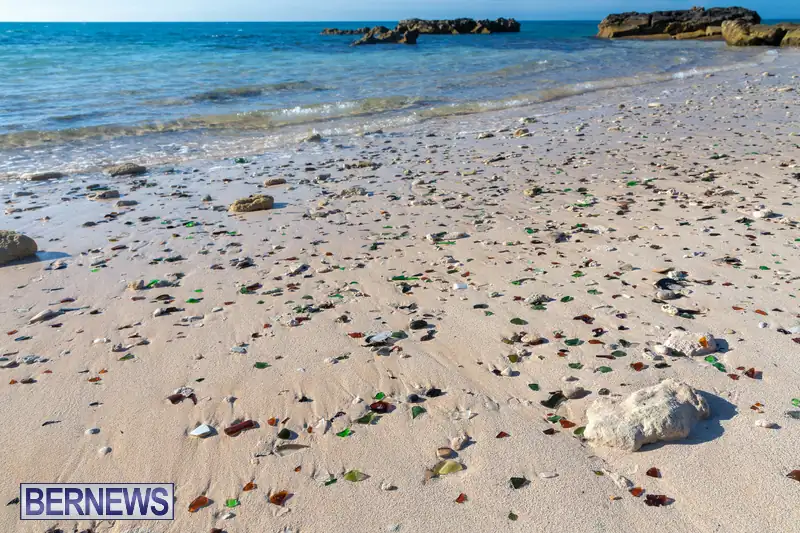
The popularity of sea glass hunting has brought challenges that threaten the sustainability of Bermuda’s beaches. Over-tourism can lead to environmental degradation as visitors trample vegetation, disturb wildlife habitats, and remove large quantities of sea glass from shores.
Additionally, modern waste management practices have reduced the amount of discarded glass entering oceans—a positive development for environmental health but one that diminishes the future supply of naturally occurring sea glass.
Efforts to Preserve Bermuda’s Beaches
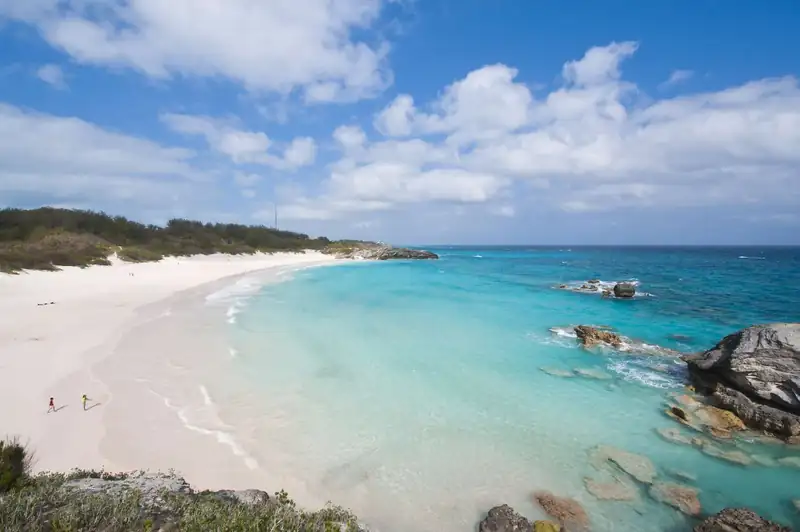
Local conservation initiatives aim to address these challenges by promoting sustainable tourism practices. Efforts include:
- Educating visitors about the ecological importance of leaving some sea glass behind.
- Implementing restrictions on collection activities at certain beaches.
- Encouraging eco-friendly alternatives such as creating artificial “sea glass” through recycling programs.
By supporting these initiatives, visitors can contribute to preserving Bermuda’s natural heritage while enjoying its unique attractions responsibly.
8. FAQs About Sea Glass Beach in Bermuda
- Why is sea glass found on beaches?
Sea glass forms from discarded glass objects smoothed by decades of wave action and chemical weathering in oceans. - Where is Sea Glass Beach located?
It is near the Royal Navy Dockyard/Kings Wharf on Bermuda’s west coast—a popular spot for collectors and tourists alike. - How rare is sea glass?
The rarity depends on its color; common hues like green and brown are abundant, while red or orange are considered rare treasures. - Can I collect sea glass from Bermuda beaches?
Collection is restricted at some locations like Dockyard Beach; visitors should follow local guidelines to protect these natural resources. - What can I do with sea glass?
Use it for crafting jewelry or home décor projects—or simply display it as a keepsake from your visit to Bermuda’s shores.
Bermuda’s Sea Glass Beach offers more than just a picturesque destination—it provides an opportunity to connect with history, nature, and art in profound ways. By exploring responsibly and appreciating its treasures thoughtfully, visitors ensure that this hidden gem remains preserved for generations to come.

